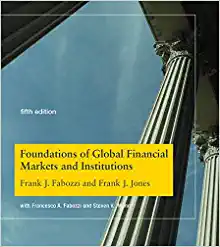


1. Optimal Income Taxation: 60 points After Pawnee and Eagleton merged to become Pawgleton, Leslie Knope was tasked with redesigning the income tax system for Pawgleton residents. Residents from Ea- gleton are more productive than Pawnee residents. Specifically, Eagleton residents have the following production function yE = 21, while Pawnee residents have production function y! = 1. In other words, Eagleton residents can produce twice as many output y as Pawnee residents for a given labor input l. The labor market in Pawgleton is perfectly com- petitive. Both Eagleton and Pawnee residents have the same utility function: u (c, 1) = In (c) - -12. Pawnee and Eagleton have the same population. Leslie Knope can identify where each individual is from (Pawnee or Eagleton), and she can also force each agent to produce a certain output. Furthermore, Leslie Knope is utilitarian. a. What is the socially optimal allocation (cP*, cEx, [Px, [Ex)? Hint: you will need to maximize the sum of utilities subject to the resource constraint: y - c + yP - CP = 0. (8 points) b. What is the utility of Pawnee residents and Eagleton residents at the social optimum? (5 points) c. Suppose that the price of output is 1. Show why the competitive wages for Pawnee residents is w = 1 and the competitive wages for Eagleton residents is w= 2. (4 points)d. Let T (y) denote the income tax function. Find an income tax function T (y) that implements the socially optimal allocation. Hint: writing out the budget constraints for both Pawnee and Eagleton residents would help. (6 points) A law was passed by Councilman Jeremy Jamm that prohibits the discrimination of Pawnee and Eagleton residents. This law prohibits Leslie from identifying where each individual is from. In essence, she cannot force productive individuals to pro- duce more, because she is no longer even able to identify who is productive. Fur- thermore, to prevent Leslie from monitoring the Pawgleton residents, Councilman Jamm has also prohibited policies that are based on labor supply I. e. Suppose Leslie tries to implement the same tax function as Part d. How much labor supply does Eagleton residents and Pawnee residents provide? (4 points) f. Explain why Leslie will no longer be able to implement the social optimal allo- cation (P* CE* 1P* [E*) in one sentence. (6 points)Leslie is now stumped. Ben Wyatt explains to her that she needs to introduce a new tax system that incentivizes the productive Eagleton residents to voluntarily pro- duce more. Ben suggests to Leslie that she should consider introducing a constant income tax T combined with a universal transfer of T. The Pawgleton government has no external revenue needs, so all of the tax revenue from T will be used to fund the universal transfer. g. Write out the individual's budget constraint. (3 points) h. Derive the labor supply of Pawnee and Eagleton residents as a function of T and T. Hint: you will need to solve the individual's optimization problem. (8 points) i. Without solving for the optimal policy, argue why Ben's proposal is better than the tax system in Part d. Hint: you will need to argue that, despite sacrificing some equality, Ben's proposal is more efficient. (6 points) When Anne saw the problem that Leslie was facing, she immediately recalled her suggestion to Ben for the health insurance problem in Problem Set 2. Anne suggests to Leslie that she should introduce a menu of allocations { ( c', y ) ), ( CE, yE ) } such that Eagleton residents voluntarily select the allocation (c, yE) while Pawnee residents voluntarily select (c), y?) . (Notice that Ben has suggested replacing labor supply I with output y, because the policy can no longer be based on 1.) j. Rewrite the utilities for both Pawnee and Eagleton residents in terms of con- sumption c and output y. Hint: output is linear in labor supply, sol = marginal productivity (2 points)












